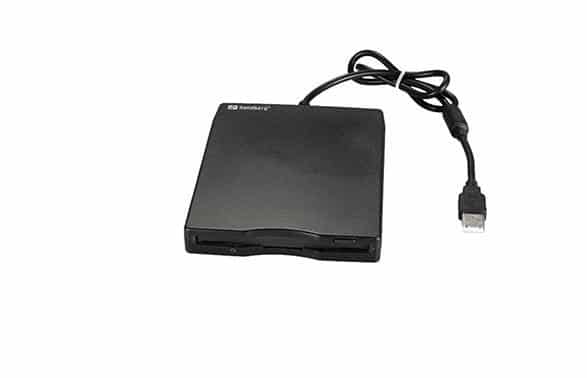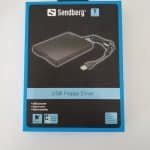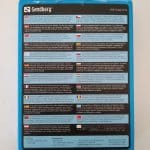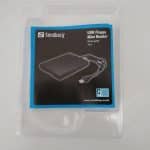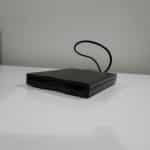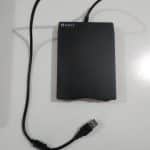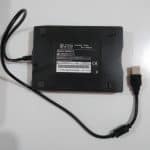Sandberg USB Floppy Drive is a hassle-free solution for those who need an easy way to read or write data from Floppy disks to modern PCs which don’t support Floppy Disk Drives. I should also add those, like me, who are nostalgia hitters.
Prologue
Floppy disks, or simply diskettes, were a popular way to store and write data until early 2000. They usually offered a capacity of 1.44 MB and were adequate means of data storage. It was the early ’80s and ’90s when they ruled, and storage needs were too limited compared to today’s standards. So, it wasn’t unusual to see them almost in every aspect back then. As technology advanced through the years, storage needs followed this trend. That made diskettes more and more inadequate and replaced by CDs/DVDs, USB flash drives, etc. Today, all modern PCs don’t offer Floppy Disk Drives. Even CD Drives are rare. Then why should someone need a diskette today?
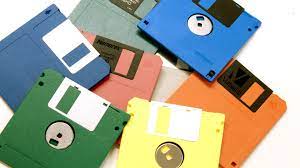
Well, there are still occasions that might be needed. Older hardware or software, unsupported programs, and business tools are some of the most common scenarios. Even NASA and Airline companies need them to update their equipment. And, of course, nostalgia hitters who are still everywhere. Sandberg USB Floppy Drive is a device that aims to those who, for whatever reason, still use floppies. Today’s review has to do with a modern device with a taste of the past. So, please be my guests.
Disclaimer: The product reviewed isn’t sponsored. It was bought by the reviewer who wanted to share his thoughts with you. Here at HardwareBusters, we offer honest and on-point reviews. If you want to help us provide more, please consider supporting us through our Patreon page. By buying products through our affiliate links, you support us without extra cost.
- Packaging Contents: 1 USB Floppy Drive, 1 User Guide
- Interface: USB Type A
- Dimensions (W x H x D): 145 mm x 15 mm x 140 mm, 3.5″ 1.44 MB FDD
- Weight: 0.39 kg
- Noise: N/A
- Power Supply: Non-Modular USB cable (62 cm), 5V – 500mA
- Indicators: Green LED indicating power and read activity
- Material: ABS
- Number of cylinders: 80
- Rotation Speed: 300-360 rpm
- Recording Method: MFM
- Reads and Writes: 720KB and 1.44MB Floppy disks
- Wattage: N/A
- OS compatibility: Windows XP/Vista/7/8/8.1/10/11, Linux
- Warranty: 5 years
Box & Bundle
The USB Floppy Drive is contained in a rather colorful plain carton packaging. It includes only the device and a manual. Suppose you can call a piece of paper a manual. But what matters most is the device, so there is nothing to complain about. Some companies offer only a QR code, and Sandberg doesn’t provide that. The packaging is adequate to protect its cargo. Nothing more or less.
Product Photos
Sandberg’s device is a rather good-looking and quality black product. It seems sturdy enough, but don’t expect to play Soccer or swim with it. The Floppy Drive meets the average consumer’s standards, and it does it well. It is just a USB Floppy Drive, after all.
Test Methodology
| Test System Specs | |
| Mainboard | HP Notebook Mainboard |
| CPU | AMD A4-9120 RADEON R3, 4 COMPUTE CORES 2C+2G × 2, 2.9 GHz |
| GPU | Advanced Micro Devices, Inc. [AMD/ATI] Stoney [Radeon R3 Graphics] |
| Storage | TOSHIBA MQ01ABF050 HDD, 500 GB, 5400 rpm |
| RAM | 1 x 4 GB DDR4 Micron SDRAM, 1866 MHz |
| OS | Windows 10 and Linux Mint, 64-bit |
| Power Supply | HP Notebook Power Supply |
| Case | HP Notebook |
| Ambient Temperature | 18°C ±3°C |
| Drivers | All Windows and Linux drivers are up-to-date |
I use my low-spec HP notebook, dual-booted with Windows 10 and Linux Mint for testing purposes. I chose this testing methodology to check OS compatibility and any notable performance difference. HP Notebook – 15-rb041nv is a device that allows me to test how the USB Floppy Drive performs in such a low-spec scenario between two different OSes. The results were quite impressive.
Performance
Since I couldn’t find any testing benchmark app to compare and post results, I went manually and improvised. I tested Sandberg USB Floppy Drive in 100 kb, 500 kb, and 1 MB file transferring, reading, and writing down the time manually. I should also add that the device is recognized as Teac Device on Linux and Windows. In Windows 10 is recognized as A: Floppy Disk Drive that was somehow nostalgic. I used a typical TDK MF-2HD 1.44 MB diskette.
Results (Windows 10)
Transferring to diskette:
- 100 kb: 2 seconds
- 500 kb: 9 seconds
- 1 MB: 20 seconds
Transferring to HDD from diskette:
- 100 kb: 4 seconds
- 500 kb: 16 seconds
- 1 MB: 28 seconds
Results (Linux Mint)
Transferring to diskette:
- 100 kb: 3 seconds
- 500 kb: 8 seconds
- 1 MB: 19 seconds
Transferring to HDD from diskette:
- 100 kb: 3 seconds
- 500 kb: 15 seconds
- 1 MB: 26 seconds
According to the results above, we can notice a slight difference between Windows 10 and Linux Mint. I checked thrice, and there wasn’t any notable difference. These are the average results of the three tests. We can assume that Sandberg’s product is more than operatable by today’s standards. You can’t go wrong with it.
Power Consumption
It is a low-power demanding device powered by a standard USB cable plugged into any available USB port. I have to state, though, that you shouldn’t plug it into a non-external powered USB hub. I noticed some freezes and non-responsiveness when I tried it. Also, choose wisely which port will be plugged into notebooks. Not all ports are suitable; so prefer USB 2.0 over USB 3.0. Desktop PCs don’t seem to have this issue. So, keep that in mind.
Noise
The Floppy Drive is a rather noisy device, which is reasonable considering how it works. When it operates, avoid using it late at night.
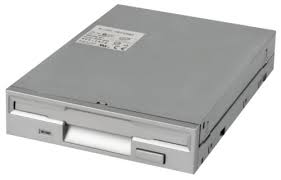
Epilogue
Sandberg USB Floppy Drive is a product that might not be worth-to-buy for everyone. It refers to those who might be a necessary tool or those who still love floppies. Nostalgia hit me, may someone say. What it does, it does it well but isn’t cheap. If you are one of those it targets, you should invest in it without hesitation. It is worth your buck.
- Quality product
- Plug ‘n’ Play
- Windows and Linux compatible
- Adequate performance, all things considered
- Five years guarantee
- Noisy under operation
- Quite expensive
- Rather rare to find
